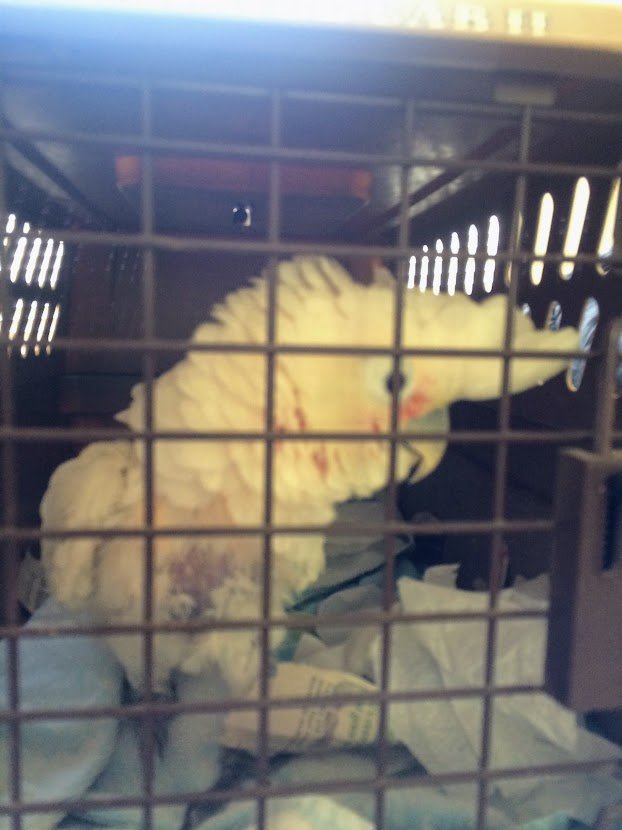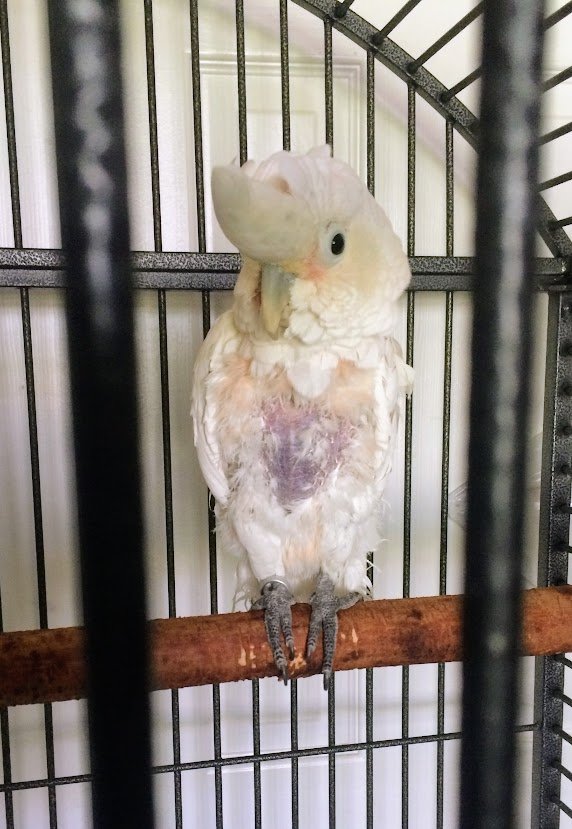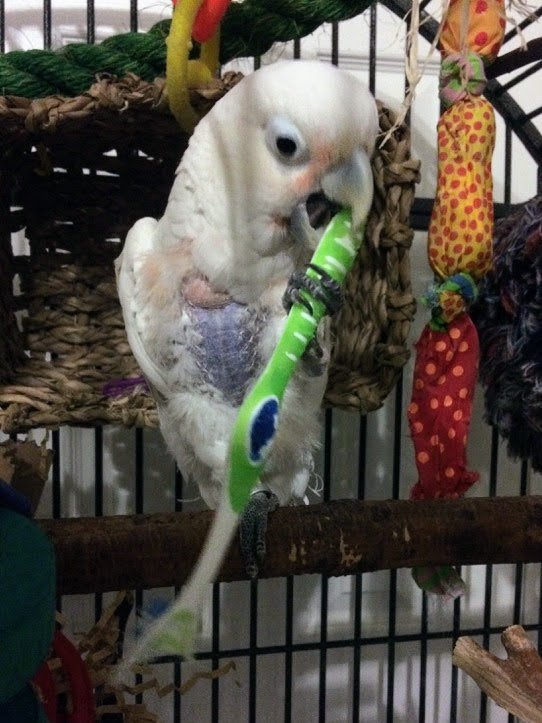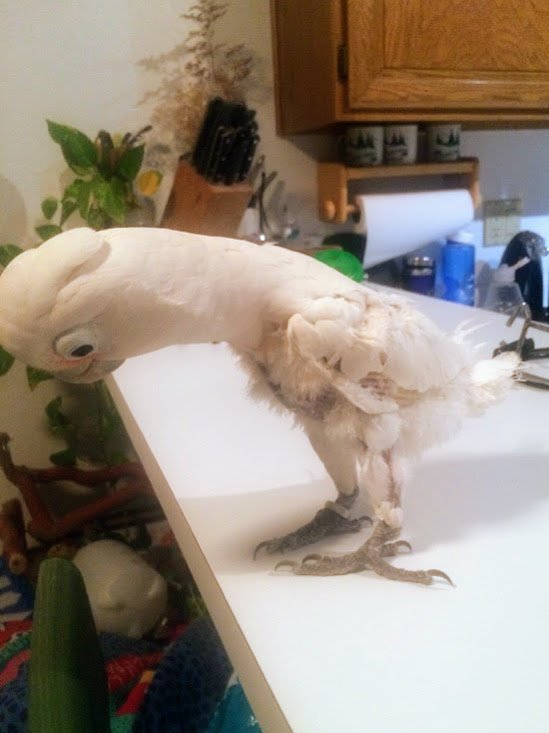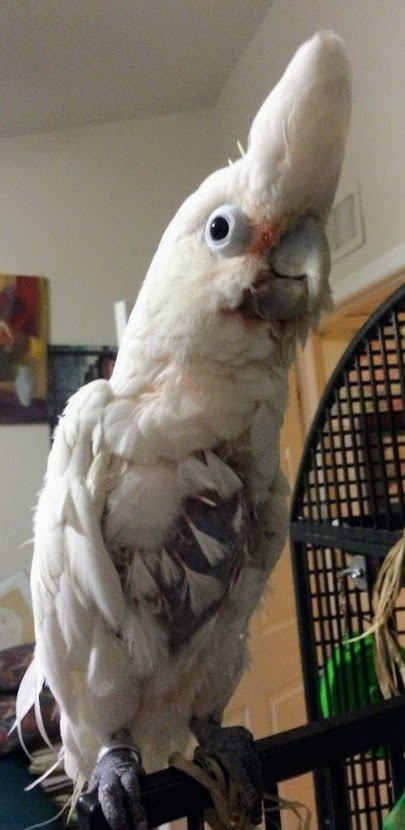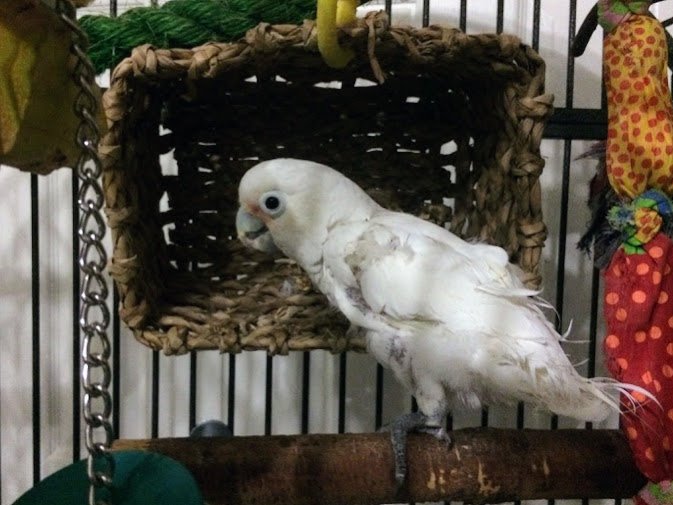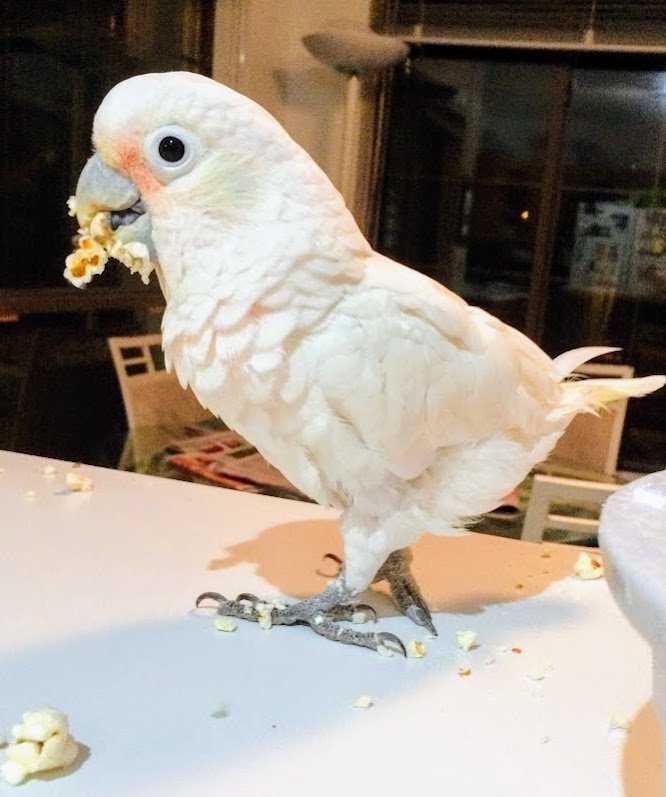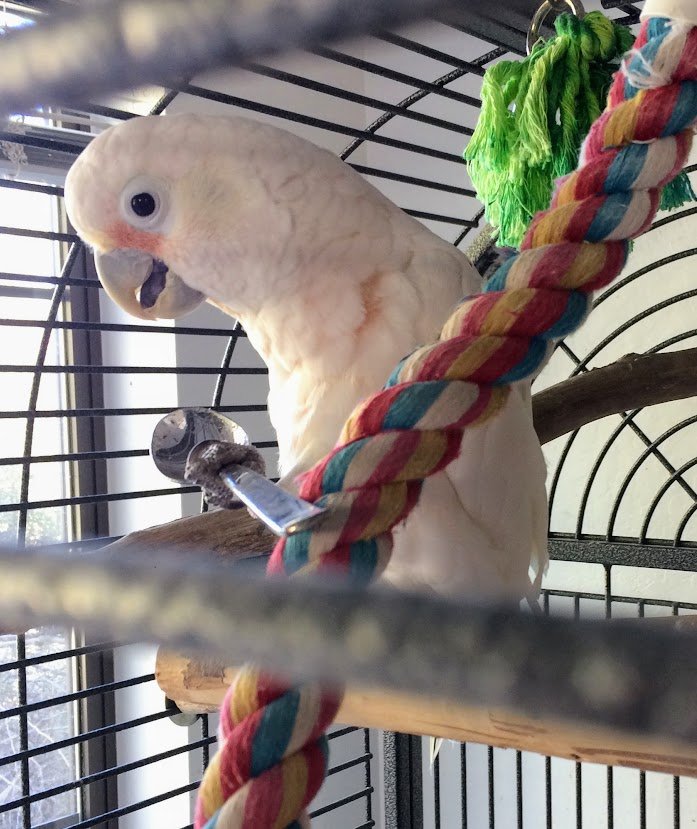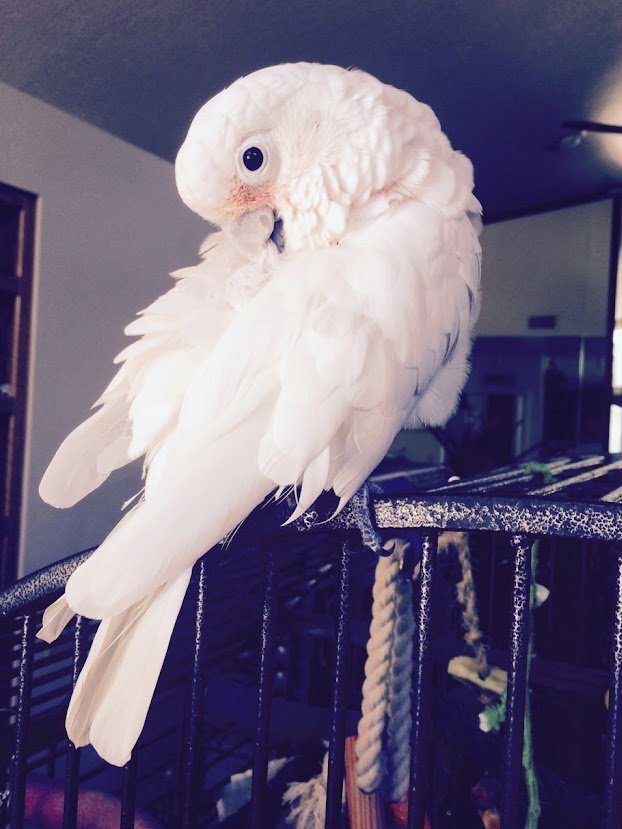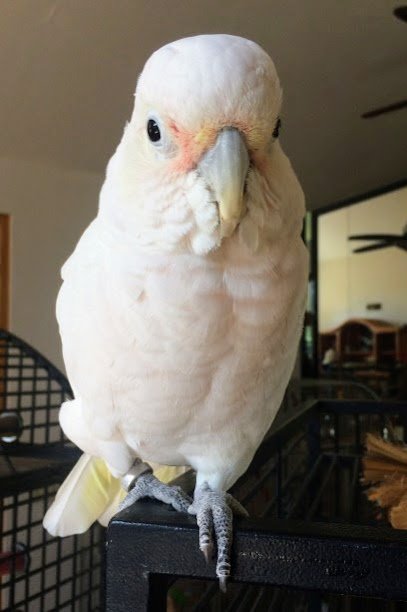Help! What Can I Do???
Feather Damaging Behavior (FDB)
FDB Behavioral Help
All behavior is performed for a reason that is important to the one doing the behavior.
Look to resolve the cause rather than address the symptoms of FDB.
Giving the FDB any attention is likely to reinforce the FDB.
As much as possible, besides implementing suggestions below, take a deep breath and realize that FDB is not our business. We can certainly influence behavior however Behavior is the Individual’s Choice.
Very often there are multiple factors in Feather Damaging Behavior (pterotillomania). Professionals are constantly learning more through ongoing research aimed at this disorder.
Options to be guided by medical and behavioral professionals:
Change human’s behavior and bird’s behavior
Environmental changes
Dietary changes
Medical intervention
ALL birds should have a (recent) medical evaluation by an avian veterinarian to discover or rule out any medical/nutritional indications for the FDB. When medical/nutritional factors have been addressed or ruled out by your avian veterinarian, we do our best to resolve this complex behavior with environmental changes.
FDB relating to hormones usually presents as (especially in cockatiels and lovebirds)
Females: on chest as a bare brood patch (contact skin to warm their eggs)
Males: between shoulder blades or a little farther back (trying to relieve discomfort of enlarged testes)
‘Time to reproduce now’ signaled to bird by
Longer daylight hours
Abundance of food
Suitable nest site
Suitable nest-building materials
Presence of mate (including human)
Environmental changes to reduce FDB
Remove nesting site availability (hiding huts, in drawers, under couch, under cage paper, boxes)
Rearrange cage decorations and furniture (move perches and toys, different or new toys, new location in house (or room and/or rearrange human’s furniture))
Remove inanimate “mates” (toys or anything used for masturbation)
Remove all materials that may be used for nesting
Use grate on bottom of cage (less comfortable for nesting if have been using newspapers, etc without the grate)
Modify daylight hours (natural/artificial light) (longer hours of daylight (and warmer) hormones increase and get ready to breed; dark and colder is sign to conserve energy, forage, not the time to raise young)
Time in SAFE comfortable outdoor space (supervised sunshine, fresh air, change of environment)
Dietary changes to reduce FDB
Decrease fats in diet
Decrease total calories
Lower protein
Eliminate constant abundant food access (lean season is not a good time to reproduce)
Avoid phytoestrogens (Flax seed!!, soybeans, sweet potatoes, apples, carrots, sesame seeds, oats, wheat, lentils, mung beans, barley, etc)
No soft mushy foods (oatmeal, etc)
No processed human foods (pizza, etc)
Changing the human’s behavior and the bird’s behavior to reduce FDB
Teach your bird what to do instead of plucking their feathers.
Reinforce “good” behavior!
Avoid behavior that may be similar to that between avian mates:
No feeding bird from your mouth
No repetitive petting/stroking below the neck
Avoid “nesting”: No on shoulder, in hair, down shirt, under blankets or sheets
Be intentional in what you are doing: Do not reinforce undesirable behaviors
IF your bird enjoys attention:
Stop any attention on the individual the instant they start any FDB. (Immediately turn away.)
Lots of attention when they do other behaviors (play with their toys, chew something not on their body, talk at appropriate volumes, show off their gymnastic skills, etc.)
Training useful behaviors and “tricks” is physically and mentally stimulating plus a great way to interact with your bird without cuddling or petting.
Offer enriching opportunities that give your bird a healthy and interesting way to spend their time, such as foraging and playing/chewing/tossing/chasing. *Watch that the bird is interacting safely with each item and is dropping all chewed pieces and not ingesting them.* Offer safe, clean, non-toxic soft and hard items to chew that do not encourage nest building such as safe branches with the bark intact; plastic food containers, vitamin bottles, water bottles; etc.
There are many collars, ponchos, sprays and other “cures” being marketed that give humans some relief and feeling of control over this frustrating condition affecting their bird.
Wearables only address the symptoms of FDB and may cause increased frustration and stress for the bird.
Sprays can have an unnatural consistency or odor which the bird must tolerate until it wears off.
Remember that all behavior including FDB is serving a purpose to the one behaving in that way - masking the symptoms does not help the bird.
Having the bird “look better” while they are still experiencing the internal cause for damaging their feathers is not helpful, or kind to the bird’s mental wellbeing.
In my opinion and experience, the answer is NOT the endless “bandaids” and suggestions offered in stores and on social platforms. Unless the bird is injuring themselves or mutilating their skin, these “cures” take control away from the individual with the FDB and prevent signs of progress or possible additional concerns or clues.
Look to the medical and behavioral professionals and the research: Keep your focus on the science.
The fact that your bird has FDB should not reflect badly on you and your care. We only control the bird’s current environment and our own behavior.
It is our responsibility to be well-informed and to provide an outstanding quality of life for our birds. Some birds will solve their FDB and for some their FDB will persist or come and go. They are all worthy of our love and efforts. Ultimately, it is the bird’s decision to pluck or not to pluck.
Providing a great home and excellent care to a bird with FDB is awesome! Thank you!!!
Do the best you can and then let them be and love them.
Barbara Bingham, CPBC, CPBT-KA Harmony Animal Behavior 480-272-0533
Working WITH ALL animals and their people
IAABC Certified Parrot Behavior Consultant IATCB Certified Professional Bird Trainer

